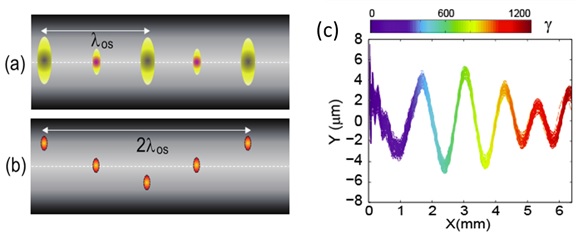Compact Synchrotron-like Radiation Sources
Prof. Zheng-Ming Sheng
Synchrotron radiation (SR) source is an advanced tool, employed in broad disciplines ranging from medicine, biology and condensed matter physics, to various industrial purposes. The state-of-the-art SR source is based on the storage ring of large RF accelerators, spanning over hundreds of meters in size. Recently Feiyu Li and Zheng-Ming Sheng together with collaborators from Shanghai Jiao Tong University in China have reported a scheme of achieving a palmtop SR source by the use of laser-plasma acceleration in a plasma channel.
One of the key applications of laser-plasma acceleration is the generation of compact X-ray sources, featured by both the ultrahigh gradient of electron acceleration and high brilliance ultrashort duration of radiations. Several schemes for generating such X-ray sources have been proposed and tested experimentally, including betatron radiation, undulator radiation and Thomson scattering, but each with their own advantages and disadvantages in terms of either the spectral tunability, efficiency of X-ray yields, or technical implementations.

The scheme reported here is, however, based on a plasma channel either straight or curved like a ring. The essential new feature is that, when a laser pulse is off-axially injected into the channel, the guiding effect of the channel forces its centroid to oscillate transversely during propagation. This results in a wiggler motion for both the accelerating structure driven by the laser pulse and self-trapped electrons inside the structure. While the energy of trapped electrons is boosted to GeV level in centimetres distance, strong synchrotron-like radiation can be produced with tunable spectrum fully characterised by the laser injection and channel parameters. Based on these features, the prospects of making a palmtop synchrotron ring fired by an intense short-pulse laser are analysed and demonstrated via simulations. This compact SR device, achieved with both centimeter acceleration and bending of electrons, could be constructed with much-reduced cost as compared to those RF-based conventional synchrotron radiation facilities. The research is reported in Light: Science & Applications 5, e16015 (2016) (http://www.nature.com/lsa/journal/v5/n1/abs/lsa201615a.html).
February 2016